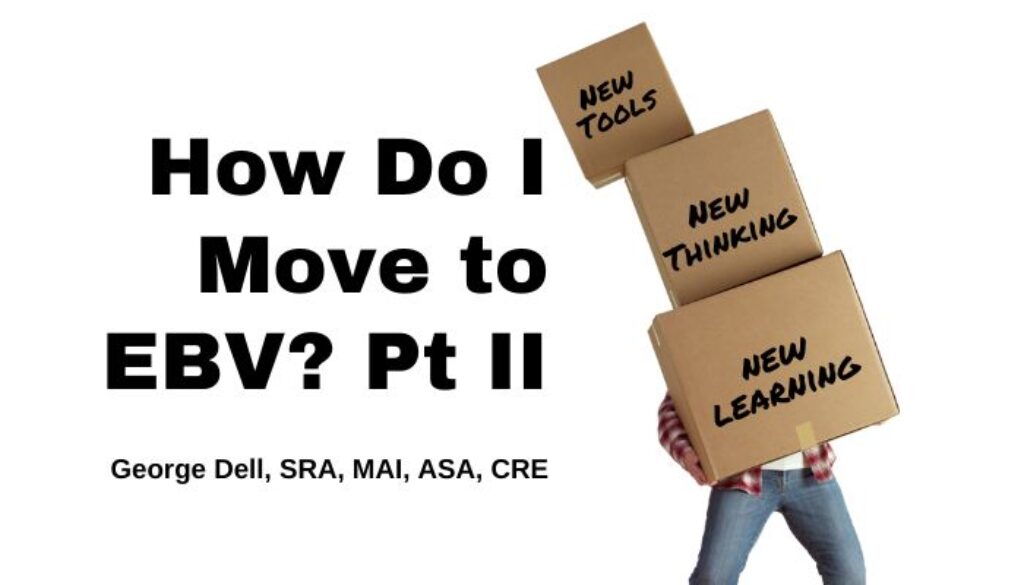Evidence Based Valuation – EBV © is the future for valuation professionals. It requires the appraiser’s experience, judgment, and knowledge. It is not hard, just new. It gives better results faster.
EBV generates more than a point value opinion. Therefore it requires competence beyond old legacy appraisal “procedures.” This new competency is a merger of traditional practice with modern data science concepts, tools and data-stream reporting.
The appraiser’s familiarity with markets and economic relationships expands to include:
- “Complete data” selection, in lieu of “picking comps;”
- Market visualization methods and display tools;
- Price indexing the competitive market part;
- Posit open-source analytics software.
Complete data means a change in old thinking in data selection. Historically, the ‘automatic’ thinking meant getting the number of sales down to six or eight, then reducing down to four or five for the report.
EBV requires the opposite: Download all available sales, then reduce to the CMS© (Competitive Market Segment). The intent is to study all relevant market data, not some hand-picked comps.
Visualization is mostly four graphs: bar chart, histogram, scatterplot, and boxplot (box & whiskers). It also includes maps and numerical summary descriptives. All four graphs are useful in connecting the appraiser expert brain to the data. In particular, it makes possible for the human brain to understand data beyond three or four comps. Graphs make market segments visible. Graphs also clarify influential sales and any outliers.
Market Price Indexing (MPI)© is a highly useful and easy-to-learn tool. MPI follows these steps:
- Identify (frame) the CMS, with expert judgment, or similarity-matching algorithms.
- Graph, using a scatterplot of sale prices over the relevant time period.
- Observe the CMS (and any needed indirectly competitive sales).
- Modify the time period to reflect the trend or any changes.
- Calculate simple regression price index adjustment.
- Present the results in the data stream report.
The learning of MPI is straightforward and relatively easy. Once learned, it is repeated in seconds.
Posit is the new name for RStudio. Posit is the user interface for R. R is a broad and robust open-source analytics software, designed from the ground up for data analysis, such as real estate information. It is unique.
The Posit user interface combines the best of “point-and-click,” command-line, and dynamic “smart” drop-down menus. It takes advantage of large modern high-resolution screens by presenting four interactive panes, so actions are immediately visible by just eye movement.
There is a great body of learning R and its many specialized packages. Much is free, much is low-cost. Valuemetrics.info offers some free and some paid webinars on our website. The introductory Stats, Graphs, and Data Science1 provides hands on experience with templates, data sets, graphical explanations, and emphasis on the underlying theory of Data Science as applied to valuation and risk/reliability scoring of individual appraisals. Help is readily available!
Data Science explicitly recognizes the need for the field-related expert, combined with computation, and human-machine interaction via graphs and reusable models and algorithms. Science, not opinion.
